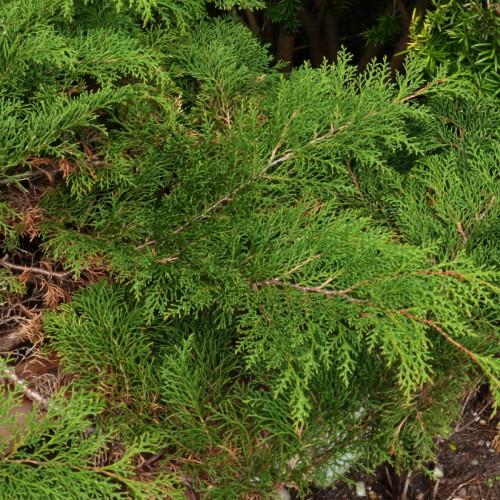
Russian arborvitae
Microbiota decussata 'Prides' CELTIC PRIDE
Cycle:
Perennial
Watering:
Average
Hardiness Zone:
2 - 7
Flowers:
Flowers
Sun:
Full sun,part shade
Cones:
Yes
Leaf:
Yes
Growth Rate:
High
Maintenance:
Low
Salt Tolerant:
Yes
Care Level:
Medium
watering
Russian arborvitae require regular watering in order to stay healthy. Water the base of the plant deeply and slowly in the morning, soaking the area around the plant up to 8 inches (20 cm) deep. Do this every 1-2 weeks during the summer, and every 2-4 weeks during the winter. It is important to make sure the soil remains evenly moist and never soggy. In periods of extreme heat and drought, the arborvitae should be watered twice a week in the summer and once a month in the winter. If you live in a region with high levels of humidity, then your arborvitae needs less frequent watering.
sunlight
Russian Arborvitae (Microbiota decussata 'Prides' Celtic Pride) is a shade-tolerant evergreen tree of the cypress family, native to Siberia. The plant requires between 4 and 6 hours of direct sunlight each day in order to grow and thrive. Optimal sun exposure is achieved when the tree is placed in an area that receives morning sun and afternoon shade. The tree's tolerance for both light and shade allows it to grow well in most garden settings. When exposed to too much sun, its needles may begin to yellow or burn. If the sun exposure is too intense for extended periods, the tree may wilt and suffer drought damage. It is best to plant the tree in an area that receives filtered sunlight during the hottest part of the day.
pruning
Russian arborvitae (Microbiota decussata 'Prides' CELTIC PRIDE) should be pruned in late-spring, around April/May, to maintain its shape and promote healthy growth. Make sure to remove any dead or diseased branches, as well as any damaged shoots. Pruning should be fairly minimal so as to not detract from the natural shape of the plant. Avoid shearing the branches as this can greatly reduce the plant's vigor and affect growth. To promote bushiness, selectively pinch or trim the tips of the branches to promote more lateral growth.
